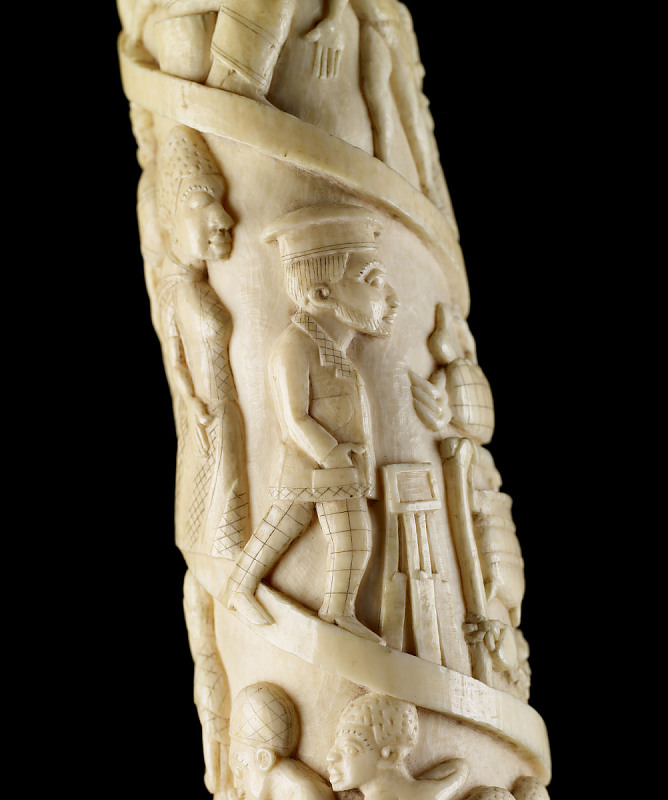Tusk

Carved Tusk, Congo (Loango Coast), Late 19th Century, Ivory.
Courtesy of Smithsonian National Museum of African Art
There are many pictures that Europeans have made of Africa. There exist pictures, too, of Africans aiming at the white man, but apart from exceptions such as Julius Lips, this view does not play a major role in the African departments of Western museums. Robert Visser went to the Congo in the late 19th century as a manager of cocoa and coffee plantations. He collected African artifacts, but was also an industrious photographer under often adverse conditions. One of his most significant collection items is the tusk of an elephant. Comparable to the Roman victory columns on which triumphal processions spiraled, there was an artistic tradition in Loango of carving narratives onto the tusks. These included genre scenes, as well as scenes of chained enslaved people, animals, and more. This tusk shows Visser himself as he positions his boxing camera. Next to it are depictions, such as a couple in front of a hut, that go back to Visser’s photographs.
The tusk is now part of the collection of the Smithsonian National Museum of African Art